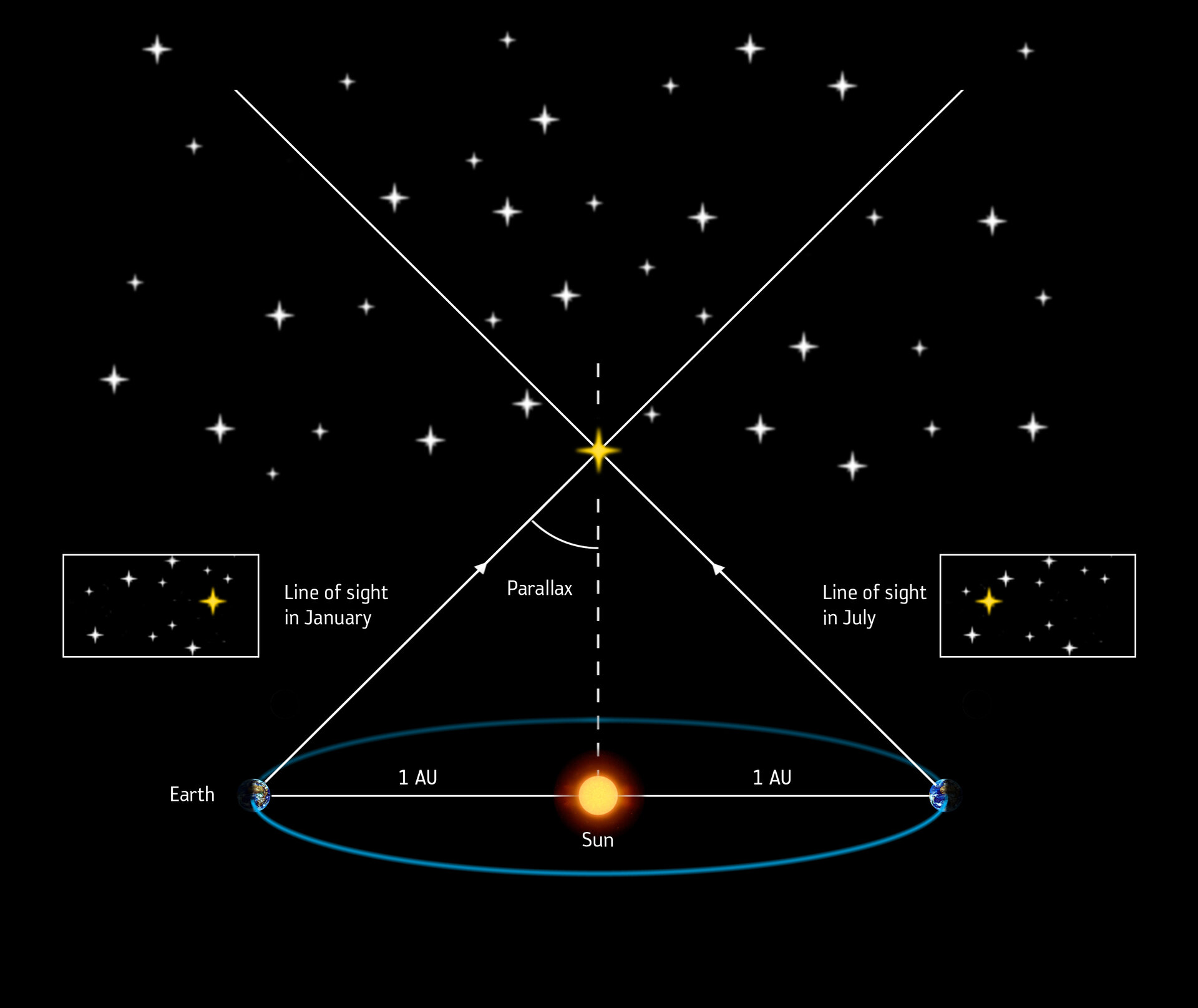Parallax
Distances in the Universe are unimaginably vast: even the nearest star is 40 trillion kilometres away. This is too far to send a spacecraft, but astronomers use a mathematical trick, called parallax, to calculate such faraway distances.
You can discover the concept of parallax right now by holding your finger out in front of your face and closing one eye. Look at where your finger is in relation to objects in the background. Now open the other eye, and close the first. Your finger appears to move against the more distant objects, even though you haven’t moved it. This is parallax!
You can experiment further by moving your finger to different distances in front of your face and blinking from eye to eye. You will see that your finger appears to move a greater distance when it is closer to your face than when it is further away.
Let’s use the orbit of Earth around the Sun as an example in astronomy. Every 6 months, Earth moves halfway around its orbit and presents a different vantage point for observing a star, the equivalent of blinking between two eyes. In this case the star appears to move from side to side against the backdrop of more distant stars.
By measuring the amount of displacement – the parallax angle – and knowing the distance between the Sun and the Earth, astronomers can determine the star’s distance using simple trigonometry.
Even for the nearest stars the amount of apparent movement is tiny: less than one arcsecond. Yet Gaia will measure the positions of one billion stars to microarcsecond accuracies.















 Germany
Germany
 Austria
Austria
 Belgium
Belgium
 Denmark
Denmark
 Spain
Spain
 Estonia
Estonia
 Finland
Finland
 France
France
 Greece
Greece
 Hungary
Hungary
 Ireland
Ireland
 Italy
Italy
 Luxembourg
Luxembourg
 Norway
Norway
 The Netherlands
The Netherlands
 Poland
Poland
 Portugal
Portugal
 Czechia
Czechia
 Romania
Romania
 United Kingdom
United Kingdom
 Slovenia
Slovenia
 Sweden
Sweden
 Switzerland
Switzerland
























